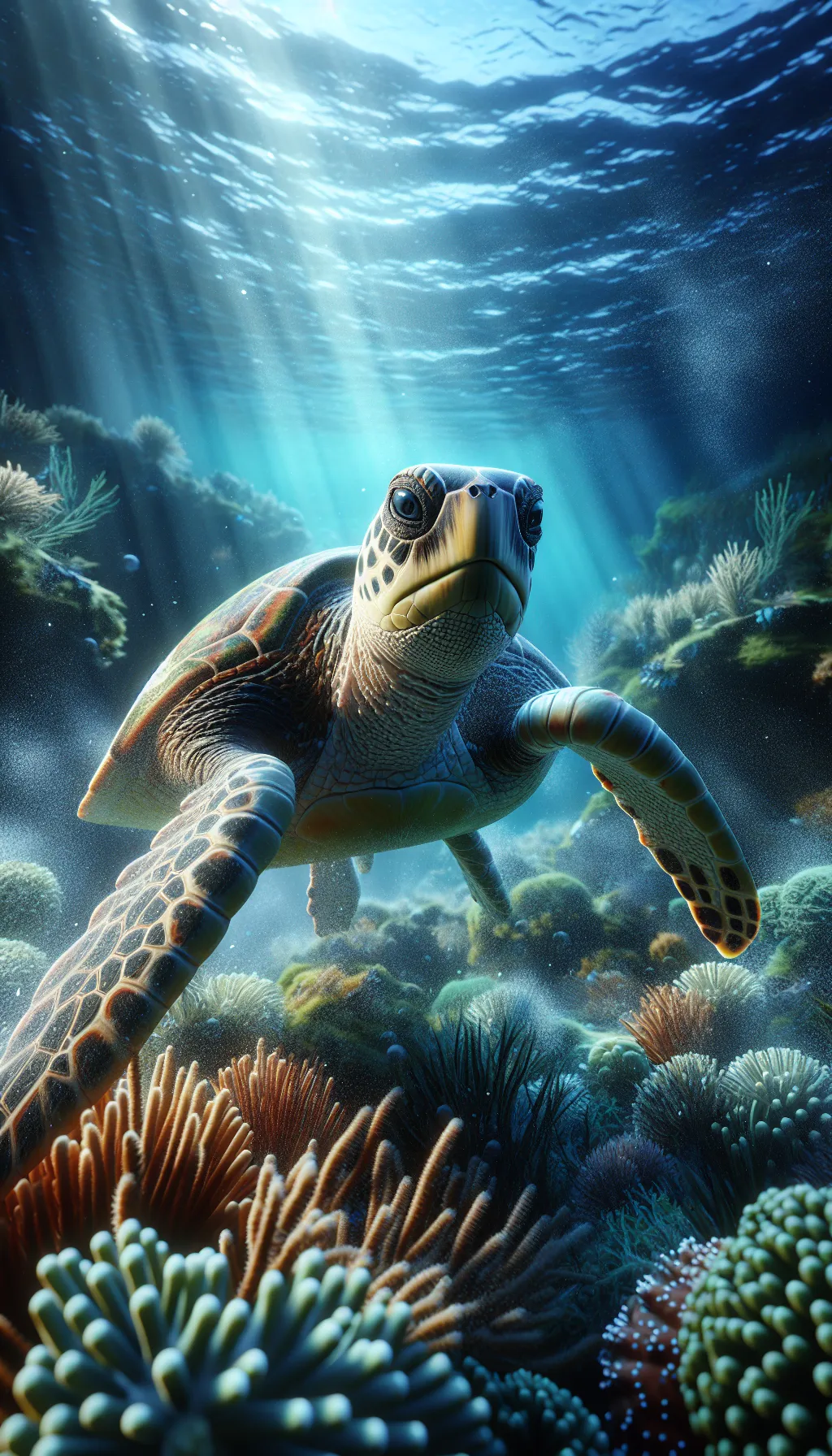The Loggerhead Sea Turtle
The Loggerhead Sea Turtle, also known as Caretta caretta, is a large marine turtle with a reddish-brown shell and strong, muscular limbs. These turtles are known for their large heads and powerful jaws, which they use to crush hard-shelled prey like crabs and shellfish. They are found in oceans around the world and play a crucial role in maintaining the health of marine ecosystems.

| Loggerhead Sea Turtle | |
|---|---|
| Size | Up to 3 feet (1 meter) in length |
| Weight | Up to 250 pounds (113 kilograms) |
| Speed | 15-20 mph (24-32 km/h) |
| Key Strength | Powerful jaws and large size |
| Biggest Weakness | Slow mobility on land |
| Scientific Name | Caretta caretta |
| Family | Cheloniidae |
| Habitat | Oceans |
| Geography | Found worldwide in warm and temperate waters |
| Diet | Primarily jellyfish, but also crustaceans, mollusks, and fish |
| Lifespan | 47 years - 67 years |

The Loggerhead Sea Turtle
The Loggerhead Sea Turtle, also known as Caretta caretta, is a large marine turtle with a reddish-brown shell and strong, muscular limbs. These turtles are known for their large heads and powerful jaws, which they use to crush hard-shelled prey like crabs and shellfish. They are found in oceans around the world and play a crucial role in maintaining the health of marine ecosystems.
Fun Fact: Loggerhead Sea Turtles have a strong homing instinct, often returning to the same nesting beaches where they were born to lay their own eggs.
| Loggerhead Sea Turtle | |
|---|---|
| Size | Up to 3 feet (1 meter) in length |
| Weight | Up to 250 pounds (113 kilograms) |
| Speed | 15-20 mph (24-32 km/h) |
| Key Strength | Powerful jaws and large size |
| Biggest Weakness | Slow mobility on land |
| Scientific Name | Caretta caretta |
| Family | Cheloniidae |
| Habitat | Oceans |
| Geography | Found worldwide in warm and temperate waters |
| Diet | Primarily jellyfish, but also crustaceans, mollusks, and fish |
| Lifespan | 47 years - 67 years |
Loggerhead Sea Turtle Matchups
We use AI to simulate matchups between the Loggerhead Sea Turtle and other animals. Our simulation considers size, strength, and natural predatory behaviors to determine the most likely outcome.
Loggerhead Sea Turtle: Diet, Predators, Aggression, and Defensive Behaviors
What do Loggerhead Sea Turtles eat?
Loggerhead Sea Turtles are primarily carnivorous and their diet consists mainly of bottom-dwelling invertebrates such as crabs, jellyfish, and sponges. They also consume other marine life such as fish, mollusks, and seaweed. They use their powerful jaws to crush the shells of their prey.
Do Loggerhead Sea Turtles have any predators?
While Loggerhead Sea Turtles are large and powerful creatures, they still face threats from predators in the wild. Some of their main predators include sharks, killer whales, and large predatory fish. Additionally, the eggs and hatchlings of Loggerhead Sea Turtles are preyed upon by various animals such as seagulls, raccoons, and crabs.
Are Loggerhead Sea Turtles aggressive?
Loggerhead Sea Turtles are not considered to be aggressive animals. They are generally calm and peaceful creatures that spend most of their time swimming and foraging for food. However, they may become defensive if they feel threatened or cornered.
Do Loggerhead Sea Turtles fight?
Loggerhead Sea Turtles do not engage in fights with other sea turtles or animals unless they are defending themselves or competing for resources such as food or mates. They may use their powerful jaws and flippers to ward off potential threats or rivals.
How do Loggerhead Sea Turtles defend themselves?
Loggerhead Sea Turtles have several defense mechanisms to protect themselves from predators or other threats. They can retreat into their shell for protection, use their sharp jaws to bite, and their strong flippers to swim quickly and evade danger. They may also use camouflage to blend in with their surroundings and avoid detection.
What is the Loggerhead Sea Turtle's biggest weakness in a fight?
One of the biggest weaknesses of Loggerhead Sea Turtles in a fight is their relatively slow movement on land. While they are agile and powerful swimmers in the water, they are slow and vulnerable on land. This makes them more susceptible to predators that can ambush them while they are nesting or laying eggs on the beach.
Fun Fact: Despite spending most of their lives in the ocean, Loggerhead Sea Turtles must come to the surface to breathe air, holding their breath for long periods while diving deep underwater.
Fun Fact: Loggerhead Sea Turtles have temperature-dependent sex determination, with warmer temperatures during incubation resulting in more females while cooler temperatures produce more males, influencing the balance of the population.










